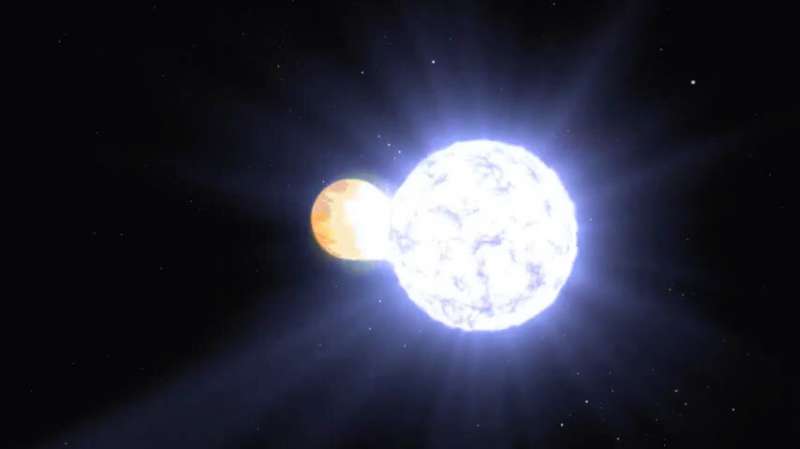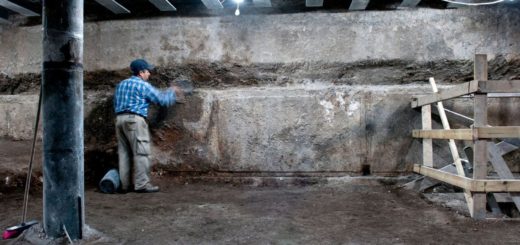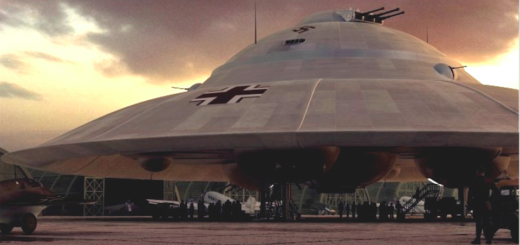NASA’s Roman mission to probe cosmic secrets using exploding stars

NASA’s upcoming Nancy Grace Roman Space Telescope will see thousands of exploding stars called supernovae across vast stretches of time and space. Using these observations, astronomers aim to shine a light on several cosmic mysteries, providing a window onto the universe’s distant past and hazy present.
Roman’s supernova survey will help clear up clashing measurements of how fast the universe is currently expanding, and even provide a new way to probe the distribution of dark matter, which is detectable only through its gravitational effects. One of the mission’s primary science goals involves using supernovae to help pin down the nature of dark energy—the unexplained cosmic pressure that’s speeding up the expansion of the universe.
Space’s biggest mystery
“Dark energy makes up the majority of the cosmos, but we don’t actually know what it is,” said Jason Rhodes, a senior research scientist at NASA’s Jet Propulsion Laboratory in Southern California. “By narrowing down possible explanations, Roman could revolutionize our understanding of the universe—and dark energy is just one of the many topics the mission will explore!”
Roman will use multiple methods to investigate dark energy. One involves surveying the sky for a special type of exploding star, called a type Ia supernova.
Many supernovae occur when massive stars run out of fuel, rapidly collapse under their own weight, and then explode because of strong shock waves that propel out of their interiors. These supernovae occur about once every 50 years in our Milky Way galaxy. But evidence shows that type Ia supernovae originate from some binary star systems that contain at least one white dwarf—the small, hot core remnant of a Sun-like star. Type Ia supernovae are much rarer, happening roughly once every 500 years in the Milky Way.
In some cases, the dwarf may siphon material from its companion. This ultimately triggers a runaway reaction that detonates the thief once it reaches a specific point where it has gained so much mass that it becomes unstable. Astronomers have also found evidence supporting another scenario, involving two white dwarfs that spiral toward each other until they merge. If their combined mass is high enough that it leads to instability, they, too, may produce a type Ia supernova.
These explosions peak at a similar, known intrinsic brightness, making type Ia supernovae so-called standard candles—objects or events that emit a specific amount of light, allowing scientists to find their distance with a straightforward formula. Because of this, astronomers can determine how far away the supernovae are by simply measuring how bright they appear.
This illustration shows a white dwarf accreting matter from a companion star. Once the white dwarf reaches a specific mass tipping point, it explodes as a type Ia supernova. Credit: NASA’s Goddard Space Flight Center Conceptual Image Lab
Astronomers will also use Roman to study the light of these supernovae to find out how quickly they appear to be moving away from us. By comparing how fast they’re receding at different distances, scientists will trace cosmic expansion over time. This will help us understand whether and how dark energy has changed throughout the history of the universe.
“In the late 1990s, scientists discovered that the expansion of the universe was speeding up using dozens of type Ia supernovae,” said Daniel Scolnic, an assistant professor of physics at Duke University in Durham, North Carolina, who is helping design Roman’s supernova survey. “Roman will find them by the thousands, and much farther away than the majority of those we’ve seen so far.”
Previous type Ia supernova surveys have concentrated on the relatively nearby universe, largely due to instrument limitations. Roman’s infrared vision, gigantic field of view, and exquisite sensitivity will dramatically extend the search, pulling the cosmic curtains far enough aside to allow astronomers to spot thousands of distant type Ia supernovae.
The mission will study dark energy’s influence in detail over more than half of the universe’s history, when it was between about four and 12 billion years old. Exploring this relatively unprobed region will help scientists add crucial pieces to the dark energy puzzle.
“Type Ia supernovae are among the most important cosmological probes we have, but they’re hard to see when they’re far away,” Scolnic said. “We need extremely precise measurements and an incredibly stable instrument, which is exactly what Roman will provide.”
Hubble constant hubbub
In addition to providing a cross-check with the mission’s other dark energy surveys, Roman’s type Ia supernova observations could help astronomers examine another mystery. Discrepancies keep popping up in measurements of the Hubble constant, which describes how fast the universe is currently expanding.
Predictions based on early universe data, from about 380,000 years after the big bang, indicate that the cosmos should currently expand at about 42 miles per second (67 kilometers per second) for every megaparsec of distance (a megaparsec is about 3.26 million light-years). But measurements of the modern universe indicate faster expansion, between roughly 43 to 47 miles per second (70 to 76 kilometers per second) per megaparsec.



 Creators of mankind
Creators of mankind Description of “Tall white aliens”
Description of “Tall white aliens” Where they came from?
Where they came from? About hostile civilizations
About hostile civilizations The war for the Earth
The war for the Earth “Tall white aliens” about eternal life
“Tall white aliens” about eternal life Video: “Nordic aliens”
Video: “Nordic aliens” Aliens
Aliens Alien encounters
Alien encounters The aliens base
The aliens base UFO
UFO Technology UFO
Technology UFO Underground civilization
Underground civilization Ancient alien artifacts
Ancient alien artifacts Military and UFO
Military and UFO Mysteries and hypotheses
Mysteries and hypotheses Scientific facts
Scientific facts


















